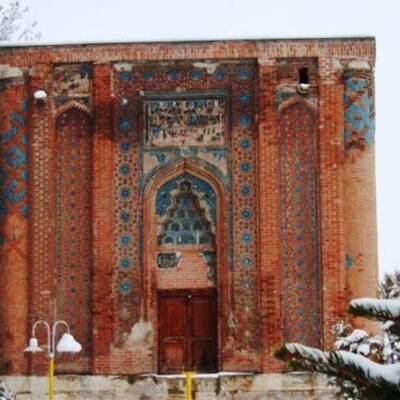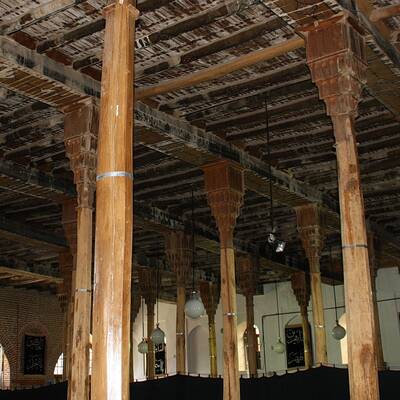What is evoked by the name of Maragheh is its observatory, however, the existence of domes such as Red Dome, Blue Dome, Ghafarieh Dome made it to be famous as the city of domes.
140 kilometers after Tabriz you will reach a large, prospered and populated city; Maragheh is the second populated city of East Azerbaijan, the province. The mountainous and temperate weather, and the river of Sufi Chay River have made the most pristine appearances in this city that caused it to be famous as the Garden City.
15 kilometers southwest of Maragheh there is a dome with red bricks that is best-known as the Red Dome of Maragheh. You can reach this dome at the crossroad of Khayyam street near Aghlar garden. It was built in one of the architecture styles of the Islamic tombs that is mostly popular in Seljuk period, however, there is no special name of a person who was buried in this place in the discovered inscriptions.
From a distance you see a square brick building that is more glorious while approaching to it. The carved red bricks in this building show the best brick works of Seljuk period. In the external façade they put some turquoise blue bricks among the red bricks and it is the starting point of Azeri style in architecture of Iran because in the previous style, that was Razi, there was no colorful glazed bricks, by no means.
There are four stone capitals in four sides of the building that guarantee the durability of the building in addition to its beauty. It has four windows that are at the highest part of the building, close to the ceiling. They balance the air circulation in the building. Some scholars believe that this building is a place to measure day and night and determine the seasons of the year rather a tomb.
The dome has seven stairs among which the last two stairs is part of the doorway. Entering the building you see an empty place without tomb. There is only a room and a basement that is considered by researchers to be the place of prayer.
Two inscriptions were installed in the north side of the entrance containing the name of builder and date of construction. There is also another inscription in the western part with the name of architect. Quranic verses are the content of eastern and southern inscriptions. All inscriptions are in Kufic script showing this building to be built in 542 AH, contemporary to the Seljuk dynasty, by the order of Abd al-Aziz Mohammad ibn-Sa’d Yadim, Azerbaijan’s ruler and its architect was Bani Bakr Mohammad ibn-Bandan ibn-Mohsen.
The building was nationally inscribed in 1310 SH.

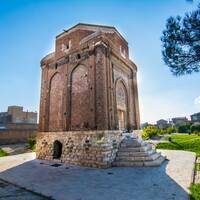
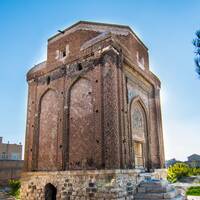
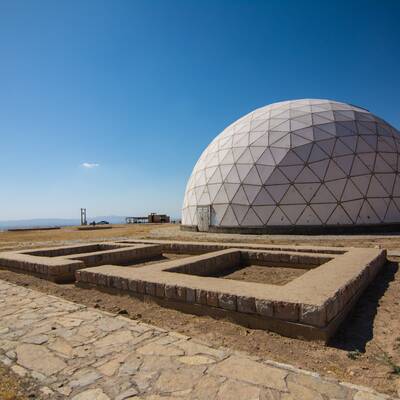
.jpg)
